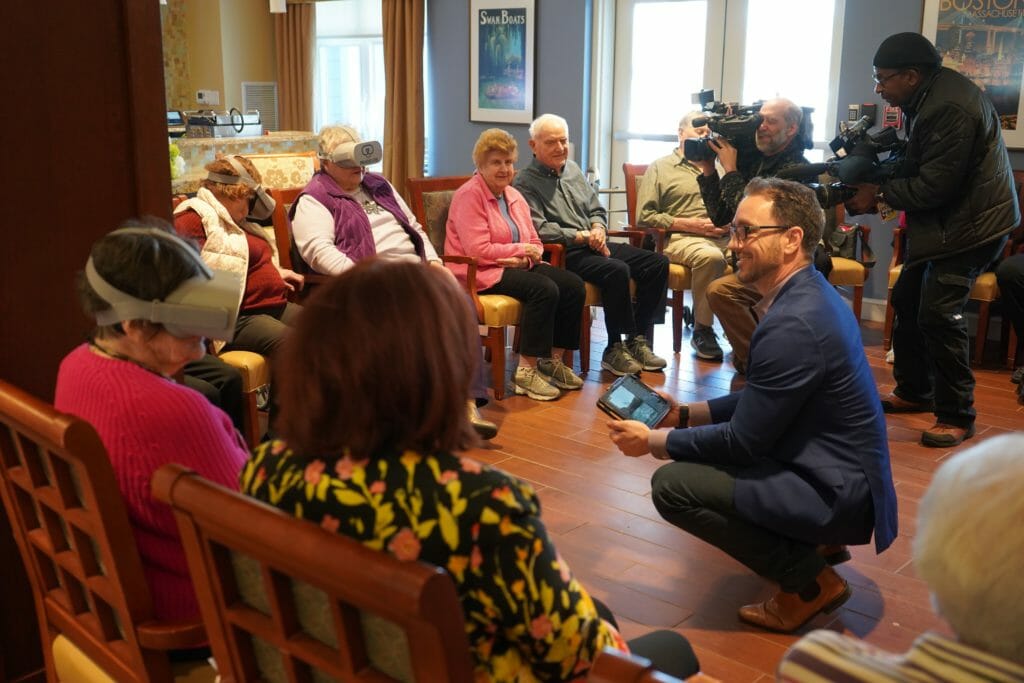
A virtual reality company will use a $2 million grant from the National Institute on Aging to test the effect of its technology on residents’ quality of life in 12 senior living communities.
Somerville, MA-based Rendever, which provides VR headsets and programming, is collaborating with researchers at the University of California, Santa Barbara, in a Phase II trial that will evaluate how virtual family engagement affects the lives of 400 older adults. The research also will gauge differences in impact across various levels of cognitive impairment.
In the study, residents will take part in weekly virtual reality experiences with an adult child who lives at a distance. Participants will have opportunities to mutually engage in “bucket list” experiences such as travel and adventure, and reminiscence therapy that includes revisiting meaningful places and story sharing. Participants’ headsets will be enabled with voice communication so that they can discuss their experiences in real time in a virtual “family room.”
Addressing social isolation
The aim is to help the residents overcome social isolation through shared experiences in ways that would otherwise be impossible given distance and, in some cases, health limitations, said researcher Nancy Collins, Ph.D.

“We have always believed that individualized programming is the best way to engage with residents of all cognitive levels, and allowing families to customize the experience to each resident can create an incredible opportunity for all parties involved,” she said.
The study will assess quality of life using measures of loneliness, mental health, learning/growth, relationship quality and other psychosocial factors, Collins said. Investigators also will assess engagement with the technology — including physical engagement as recorded by video. They’ll perform kinesthetic mapping of participants’ body movements and measure residents’ positive responses through surveys, interviews and other data-gathering techniques, and measure user experience (enjoyment, comfort level, ease of use).
Engagement and cognitive impairment
The study will also examine how levels of dementia might affect engagement with the platform, Collins said.
“For each of these outcome variables, we will compare the outcomes for older adults with mild cognitive impairment to older adults with mild to moderate Alzheimer’s disease or related dementias. This will enable us to determine if the technology has different outcomes for those with lesser or greater cognitive impairment,” Collins said.
Previous research has found that Rendever VR experiences shared with senior living staff members leads to increased feelings of trust and social engagement. After two weeks of shared sessions, residents reported statistically significant decreases in depression scores, Collins reported.
Earlier trial results also have highlighted the importance of reminiscence therapy in engaging older adults, she noted.
“The highest level of both conversational engagement and physical engagement came from residents as they were experiencing their life story (such as visiting their childhood home) and reliving moments with their family member in the virtual family room,” Collins said. This “supports the role and impact of reminiscence therapy in designing immersive experiences,” she concluded.
Senior living community participants include Vista del Monte, Covenant Living at Samarkand, Atterdag Village of Solvang, AlmaVia in Camarillo, and Valle Verde — all in Central California — and several communities operated by Northbridge Companies in Massachusetts.




